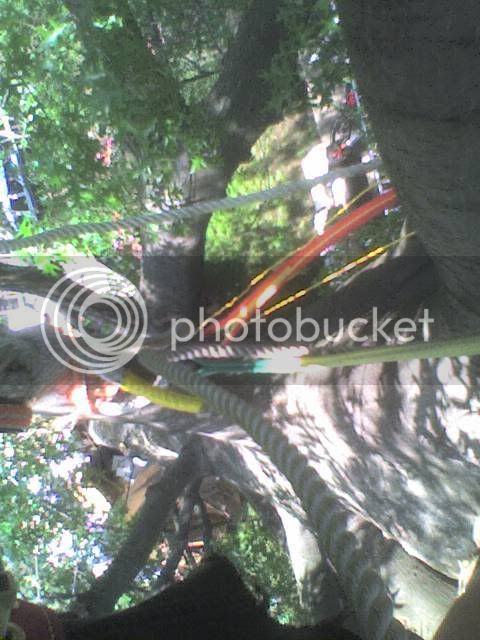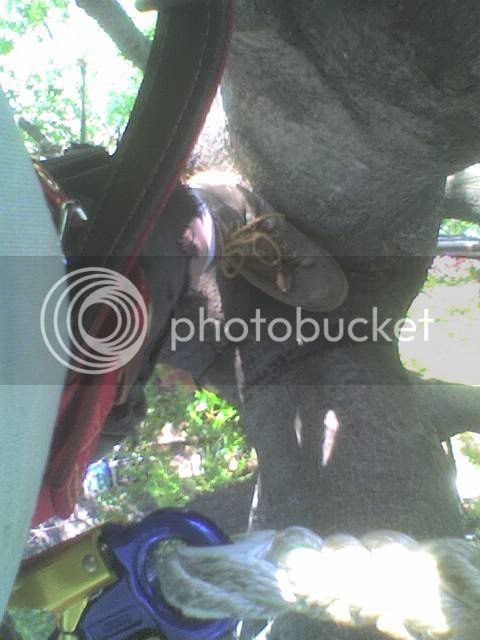arboralliance, I'm happy to clarify...
First, when I say "free climb," I don't mean without protection, I simply mean without a rope tied in above you.
Using a cambium saver is not always practical. I use them whenever I can for the sake of both the rope and the tree. Lots of trees here in the Northeast have good thick bark that can stand quite a lot of abuse from a rope. I often will climb to the top of a tree, most of it by free climbing, then install a cambium saver and use it to rappel down...
Leaving a CS in the tree for extended periods. I assume you are concerned about damage from UV light. There will be damage--the question is how much. Here are some of the factors I considered:
1. The manufacturer of the polyester rope I use certifies it for extended periods of outside use if it is inspected regularly.
2. After many months outside, I have never been able to detect the slightest damage, such as powdery surface, broken strands, what-have-you.
3. At my latitude, 45 degrees North, UV light drops to near zero during the winter, and even in the summer is relatively weak (compared to Down Under).
4. I have some small diameter (5 or 6 mm) crappy polypropylene tie-down rope in the back of my open pickup. This is my canary in the coal mine. It is MUCH more susceptible to UV damage than polyester. After 5 years of non-stop exposure, it shows clear signs of damage, but it is still functioning just fine. I wouldn't start worrying about my big fat CS rope until this crappy little tie-down rope is a pile of dust.
5. Mountain climbers have left nylon climbing ropes permanently installed in high places for years, including Everest, and they (reluctantly) still use them.
Conclusion: UV damage to a good polyester rope is extremely slow. Use a small-diameter cheapo polypropylene rope for an exposure meter. When it starts to look really ratty you might want to take a look at that CS that has been up in the tree for a few months...


























































